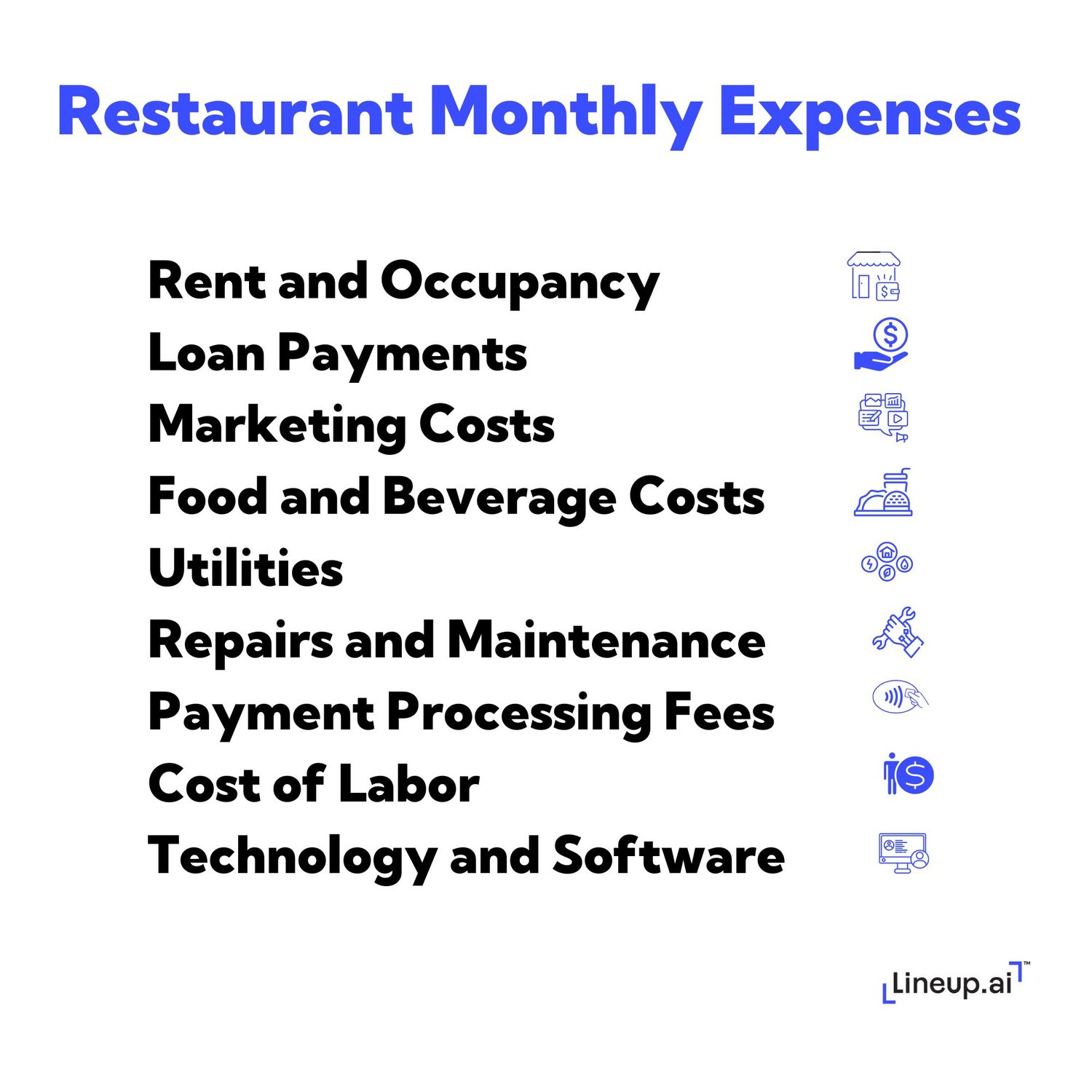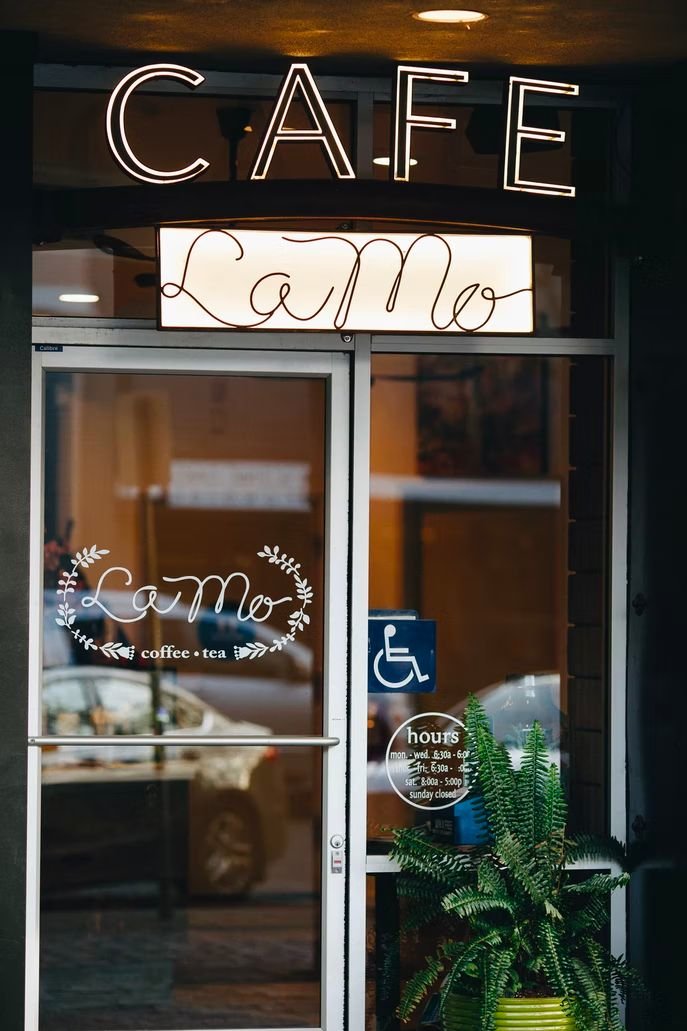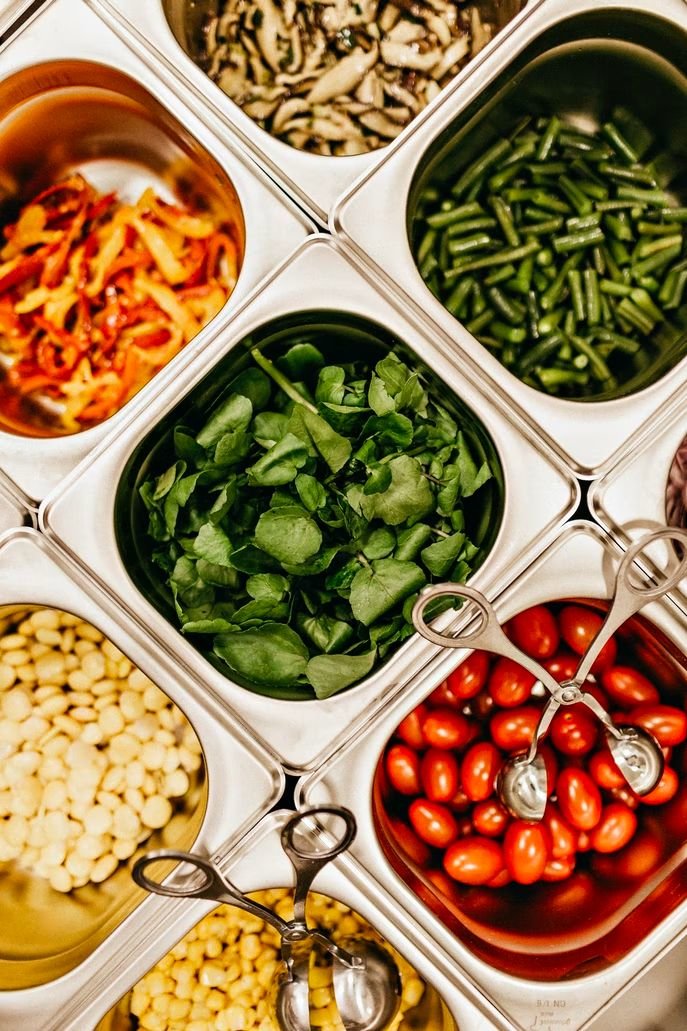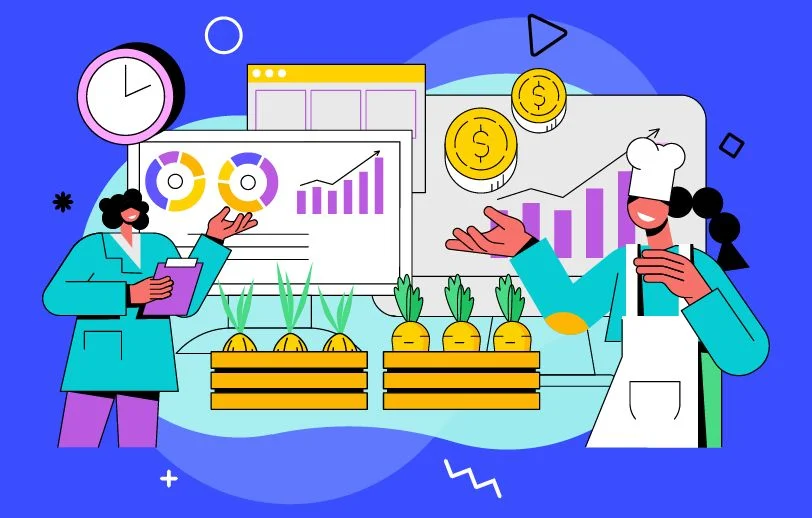The fear of failure isn’t completely unfounded when you own a restaurant. Restaurant businesses have a failure rate as high as 30% within the first year.
With thin profit margins and strict industry regulations, many restaurants struggle to stay afloat, especially within their first year of operation. While factors such as food quality, customer service quality, and marketing strategies certainly play a role in a restaurant's success, there's one critical element that can make or break your business: your monthly expenses.
Managing restaurant monthly expenses is a critical aspect of running a restaurant business.You need to ensure that you are keeping track of all your restaurant costs and expenses and that you are making informed decisions based on that data. This is important for several reasons. Firstly, managing your expenses can help you control your costs and improve your profit margins. Secondly, it can help you make informed decisions about pricing, marketing, and other business strategies. Lastly, it can help you avoid financial surprises, such as unexpected bills or penalties.
From rent and utilities to food and labor costs, there are many monthly expenses to consider when running a restaurant. In this guide, we'll dive into the details of the typical restaurant's monthly expenses list and provide you with strategies for controlling costs and maximizing your profits.
Restaurant Monthly Operating Expenses and Costs
Restaurant monthly expenses list can broadly be categorized into three: fixed, variable, and mixed fixed and variable or semi-variable monthly costs.
A restaurant's fixed monthly expenses are those payments that remain constant from month to month. Expenses such as rent, loan payments, licensing fees, insurance premiums, and related costs are good examples of fixed costs.
Variable restaurant expenses, as the name suggests, are those payments that are difficult to project because they fluctuate month to month. The exact amounts of variable costs are often hard to predict because they vary with output, market conditions, and other factors. However, an operating restaurant may predict the costs more accurately in advance or budget for the payments as a range. Food, utilities, repairs and maintenance costs as well as payment processing fees are all examples of variable costs in a restaurant.
Mixed expenses are payments that have components of both fixed and variable expenses. These payments may be budgeted for with an exact figure as a fixed expense, but must always have a wiggle room because other factors may cause it to fluctuate.
Here is a list of restaurant monthly expenses and costs.

1. Rent and Occupancy
The cost of occupying a location or physical building is one of the highest expenses of running a restaurant. As a rule of thumb, the total amount you pay for rent and occupancy should average between 5% to 10% of monthly sales. Whether you pay a fixed rent, rent with varying building fees, or a varying mortgage cost, this cost remains a long-term expense for which you must budget.
Even when you operate your restaurant in a property you own, you’ll be paying your building loan or mortgage along with any property taxes or associated fees.
It is crucial to ensure that the rent or mortgage payments are affordable and in line with your budget. If you are looking to reduce your rent or mortgage payments, you may consider negotiating with your landlord or refinancing your mortgage.

2. Loan Payments
Loan payments refer to the money that the restaurant must pay back to a lender on a regular basis. This lender could be a bank, a private investor, or another financial institution.
When a restaurant is started or expanded, it often involves large initial investments for things like renovation of the premises, purchase of kitchen equipment, and so on. If the restaurant owner doesn't have enough capital, they may decide to take out a loan to cover these costs.
Loan payments typically include both a portion of the principal amount (the original amount borrowed) and interest (the cost of borrowing the money). The terms of the loan will dictate how much needs to be paid back each month, and for how long.
It's worth noting that while these loan payments can be a significant monthly expense, they also represent an investment in the business. The money from the loan can be used to enhance the restaurant's ability to generate revenue, and over time, hopefully, the returns from this investment will exceed the cost of the loan.
Managing your loan repayments is vital to keeping a healthy lifeline when the business faces a cash flow crunch.
3. Marketing Costs
There is rigorous competition in the restaurant industry. This makes marketing a necessary expense for every restaurant. Smart marketing and budgeting are crucial to ensuring the highest returns on investment.
While you can budget marketing as a fixed expense, the costs may vary with the seasons and your marketing objectives. Setting specific goals when setting up marketing campaigns and factoring in hidden and unexpected costs and charges is essential. Generally, you should allocate between 3% and 6% of your total budget to restaurant marketing expenses.
4. Food and Beverage Costs
Food and beverages are the core offerings of a restaurant, and their costs comprise a significant portion of the restaurant's monthly expenses. Known as the cost of goods sold (COGS), these costs can vary greatly due to several influencing factors.
Balancing the cost of producing food can be a complex task, given the wide array of inventory, the risk of waste and pilferage, and the challenge of accurately predicting daily demand. This extends beyond food to include various types of drinks, from alcoholic beverages to soft drinks and specialty coffees, each with their own cost structures and shelf lives.
The key to efficient management in this dynamic industry is leveraging the power of modern technology.
Lineup.ai is at the cutting edge of this transformation, offering restaurant forecasting software that harnesses the power of artificial intelligence and machine learning. The platform delivers detailed, dynamic sales forecasts, along with labor predictions.
With Lineup.ai, restaurateurs can tap into predictive analytics to understand customer behavior, optimize staffing levels, and predict sales trends across their food and drink menus. Its ability to generate accurate forecasts, taking into account a variety of factors from historical data to current trends and external factors, ensures optimal inventory management, reduces food waste and enhances profitability.
Lineup.ai is more than just a software - it's a strategic tool that enables restaurants to turn data into a powerful ally, paving the way for greater efficiency and improved bottom-line results.

5. Utilities
A typical restaurant pays for electricity, gas, water, internet, telephone, cable, and other essential services. These costs are technically expenses, but they can vary month-to-month based on usage. Generally, restaurateurs should allocate about 5% of the total costs of operations to utilities.
Invest in energy-saving appliances to keep the cost of electricity low. This may include buying energy-saving light bulbs, for example.
6. Repairs and Maintenance
If you are not careful with tools and equipment, repairs and maintenance costs can quickly add up and possibly even hurt restaurant profits. On average, maintaining and repairing equipment can cost 2-6% of the total operations budget for a restaurant.
Be proactive and schedule regular preventive maintenance for equipment. Regular maintenance will help eliminate hefty repair and replacement costs in the future. If possible, lease kitchen equipment that is costly to maintain and repair. The approach will transfer the cost of equipment repair and maintenance to the owner. This can be useful, particularly for a restaurant not focused on building equity.
7. Payment Processing Fees
With so many payment options available today, every restaurant must use a third-party payment processor or merchant to accept payments from all customers. Different merchants charge different rates to accept payments. Luckily, most processors offer deals where prices and fees can be structured to meet the needs of small businesses. Most structure their fees based on terms of payment, amount to process, payment methods accepted, and feature support such as POS.
Choose a payment processor that accepts most forms of payment. Do not lock out customers using new or unpopular payment methods.
8. Cost of Labor
Aside from the food cost, the cost of labor is one of the biggest and most unpredictable expenses a restaurant incurs. Labor costs may go as high as 30% to 50% of the restaurant’s total budget. This is understandable considering that employees are the driving force in the restaurant, and the most skilled and experienced staff often demand the highest pay. Learn more about how to calculate labor cost percentage in a restaurant.
However, you should aim at keeping labor costs between 20% and 30%. The cost of labor varies greatly and can be difficult to forecast. It is also among the highest restaurant startup costs.
Read about strategies to reduce labor costs.
9. Technology and Software
Restaurant management software is a must-have tool for any modern restaurant. Using a software tool to manage operations in the restaurant will help keep costs low and save you money. Automating restaurant activities will also help streamline operations and help you understand what’s going well and what could be improved.
Getting Started with Optimizing Restaurant Monthly Expenses
The only way to run a successful restaurant today is to keep costs under control. The costs of opening and running a new restaurant are high. However, there are many factors that can optimized to keep your restaurant running at its best. The most notable is leveraging new technology to streamline management activities and eliminate unnecessary payments and costs.
Note: This article is for informational purposes only and is not legal or financial advice. Consult your own legal counsel and financial representatives.
Further read:

The team at Lineup.ai is composed of seasoned professionals who hold deep insights into the unique challenges and pain points of the restaurant industry, and are equally skilled in artificial intelligence, machine learning, and data analytics. This fusion of expertise enables Lineup.ai to create cutting-edge AI solutions specifically tailored for the restaurant sector. The technical and analytical prowess of the team, combined with a deep understanding of the unique challenges faced by restaurants, forms the cornerstone of the company's innovation. The team at Lineup.ai also excels in communicating the benefits and applications of AI and machine learning to businesses, ensuring clients fully leverage the capabilities of these solutions.
More about the author